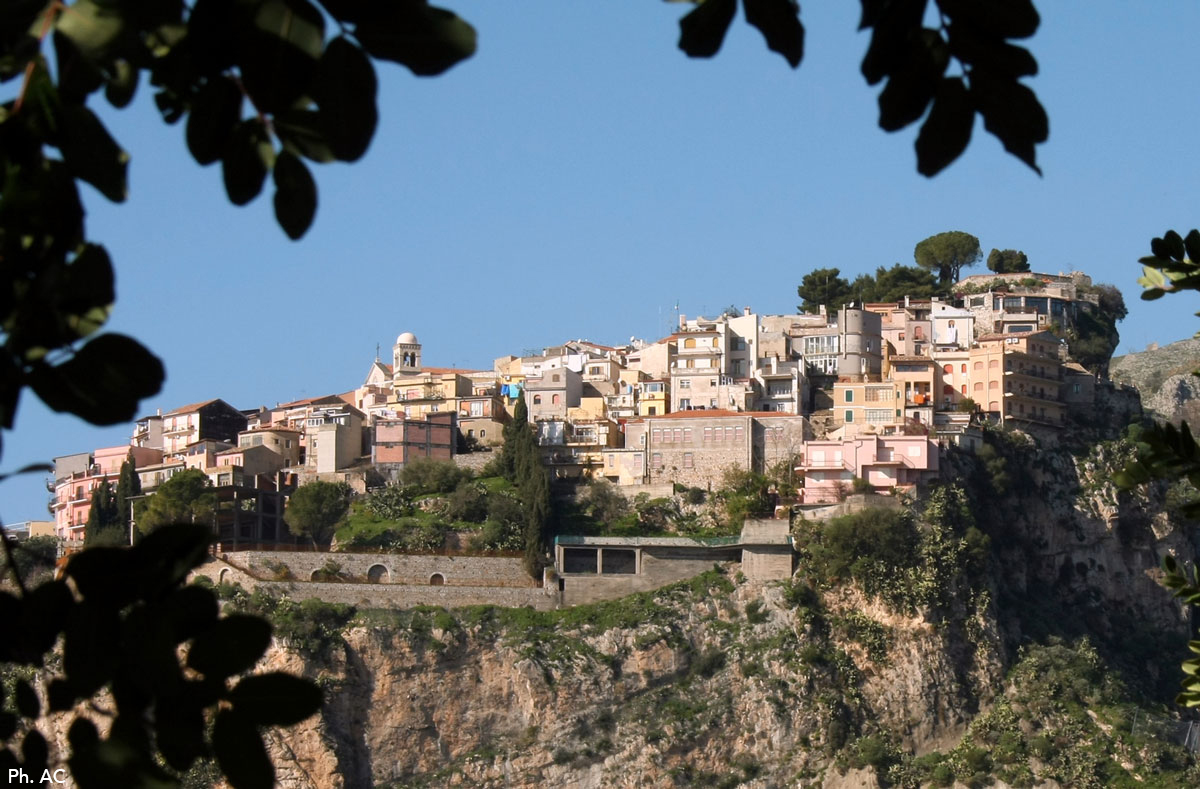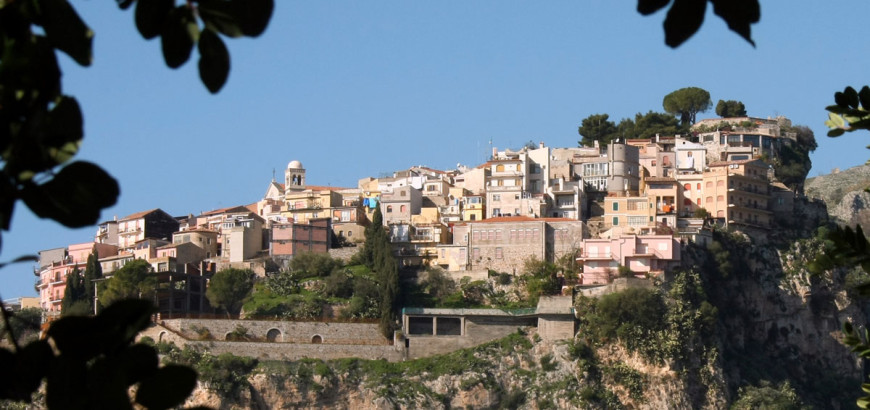
We lead you to one of the “Borghi più belli d’Italia” (most beautiful towns in Italy): Castelmola.
Its name derives from the Norman Castle that stands here. The view from the town at the top of the hill overlooking the Ionian Sea is second to none: you will see the Ionian coast, Taormina and the Calabria coastline.
This is the small town where the German Baroness Frieda von Richthofen used to meet with a young muleteer named Peppino D’Allura (which inspired the novel “Lady Chatterley’s Lover” by D.H. Lawrence).
Castelmola is also famous for the almond wine prepared by Don Vincenzo Blandano, the founder of the first bar in Castelmola (Taverna San Giorgio), who used to offer this drink to visitors to Castelmola as a sign of welcome.
CHURCH OF THE SS. ANNUNZIATA
The Church of the SS. Annunziata is only open for worship during the feast of the Annunciation from August 1 to 15.
The church with its impressive door dates back to 1100 and was built at the behest of Ruggero The Norman to thank the Virgin Mary when he defeated the Saracens.
THE CASTLE
Admire the Castle, of which only the Norman walls are still standing. The date of its building is unknown, but it was a key element of the defence system of the territory.
The Castle was the strongest link in the chain of defence for centuries that included the manors of Milazzo, Ficarra, Tripi, Castroreale, Castiglione and Francavilla, and it represented the strategic location to conquer to take control of the territory.
PIAZZA SANT’ANTONIO
The square has a white and lava stone mosaic floor. It welcomes you with a variety of local and traditional products and with the homonymous church, now converted into the municipal auditorium.
On the right, there is the ancient arch that marks the entrance to the town and in front it is the famous Caffè San Giorgio: founded in 1700 by monks and later transformed by Don Vincenzo Blandano into one of the most typical bars in the town. Here you will find a rich collection of “Albums” from 1907, containing the signatures and thoughts of visitors, including some illustrious men from the twentieth century. You can also sample the famous and delicious almond wine (“Blandanino”), that Don Vincenzo created using ancient Greek infusion techniques.
THE CHURCH OF ST. GEORGE
The Church of St. George, built in the second half of the fifteenth century, has a simple and sober architectural style: a large pipe organ and sacred art works are still visible in it.
The marble floor has two tombstones from the congregations of St. George and of the SS. Crocifisso in the nave and the chapel – with inscriptions in Latin. The first leads, through a staircase carved into the rock, to the crypt containing the catacombs.
In the chapel of SS. Crocifisso you can admire the statues of St. Biagio and an eighteenth-century fresco of the Pietà behind an old wooden crucifix.
THE DUOMO
The Cathedral dedicated to St. Nichola of Bari was built in the sixteenth century and rebuilt in the first half of the twentieth century. You can admire different styles: Romanesque, Gothic, Arab and Norman, as well as numerous art works and statues.
THE CHURCH OF ST. BIAGIO
The church of St. Biagio was the first church to be built in Castelmola in a place with a unique view.
It stands next to a rock and facing a square from where you can see Mount Etna, Taormina and the bay of Naxos. Inside, you can admire many other works and an eighteenth-century fresco.
